Editor’s Note: This article first appeared in the February 2021 edition of the CWops Solid Copy newsletter written by SARA member Javan Miller W8UA.
By Javan Miller W8UA
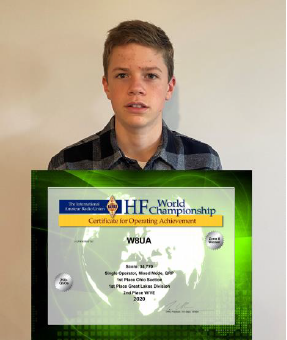
After spending my first several months as a ham just lurking around 2m and 70cm, I participated in my local club’s Field Day event and decided it was time to move beyond only nets and such like and join the ranks of those on HF. Following having numerous discussions with my friends about different radios, browsing through DX Engineering’s web catalog, and having nightly discussions with my Dad, we finally made the anticipated trip to the DX Engineering showroom and brought back an SDR desktop transceiver. Okay, we got the easy part over with (for me at least), purchasing a rig, but I could tune across the entire RF spectrum, and only receive two birdies. Oh, yeah, I may need an antenna as well!
Unfortunately for farmers of this breed, my parents’ medium sized lot has a total of five trees over the 20 feet mark but are about 400 feet away from the QTH. These are good for a different project, but I do not need a beverage antenna yet. At this point, it sounds like my best option is a tower, but no, due to the unsightliness, that is not an option either. So, welcome to my attic, which is the home of all antennas at this QTH.
Choosing an antenna
After my Dad and I researched different multiband antennas, we decided on a fan dipole. Since we had no experience with building antennas, a member of my local club suggested that although many are successful with fan dipoles, they can be a bit tricky to tune if they are confined in a small area. So, we decided on a 40m off-center-fed or simply OCF dipole. My Dad started to model different OCF’s with MMANA-GAL Basic, which is a very easy to use, free antenna modeling program. Since we found out right away that the common 1/3 – 2/3 ratio used for OCF’s excluded the use of 15m unless a wide-range tuner is used, we discovered the 1/6 – 5/6 ratio which covers 40m, 20m, 15m, 10m, and 6m.
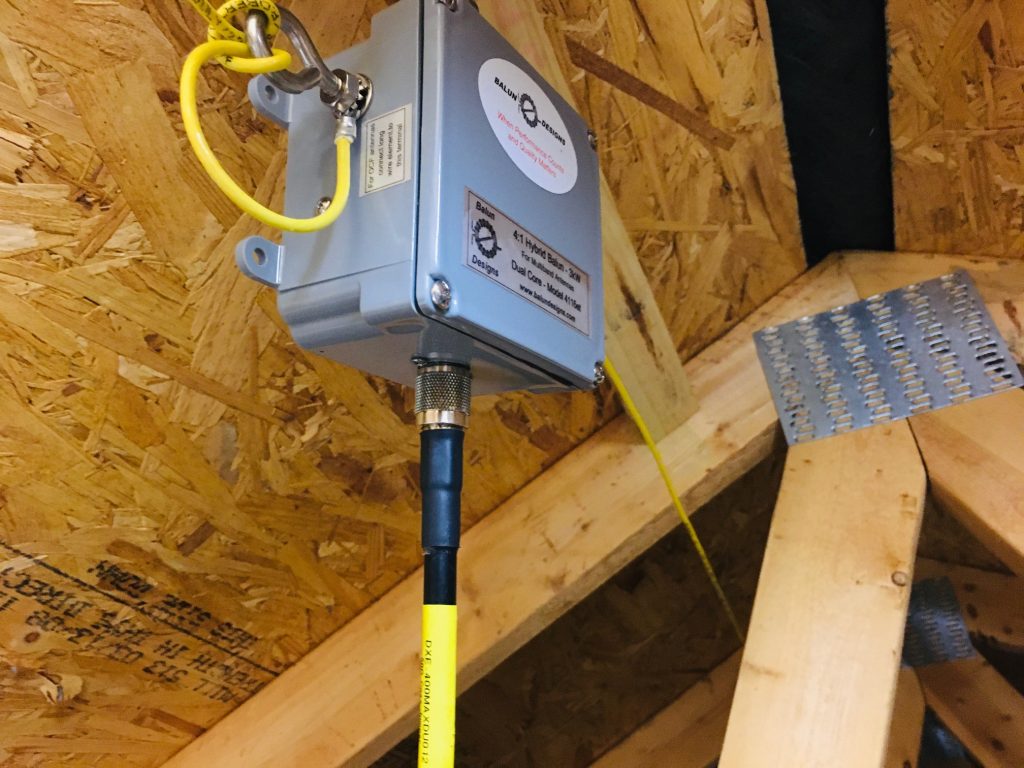
Building and installing the antenna
The local ham that recommended the OCF to us suggested that we follow his design and use the Balun Designs 4:1 current balun. Although the manufacturer reveals what is in the magic box to us: “this balun is a hybrid combination of a 4:1 voltage balun and a 1:1 current balun,” we went ahead and purchased it. After ordering a spool of wire, we decided that it was finally time to install our first HF antenna!
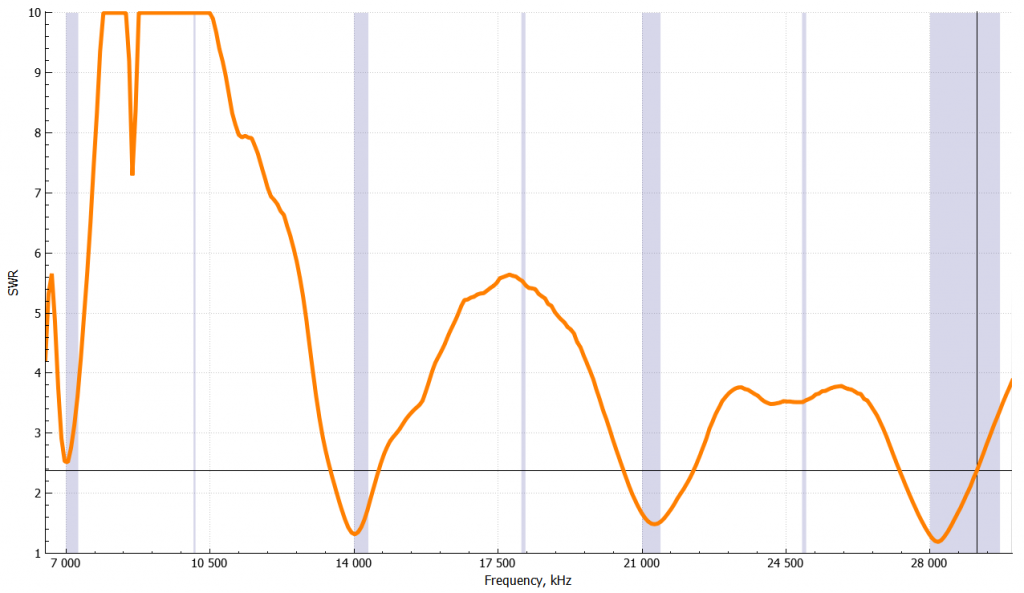
Unfortunately, we did not adhere to the adage of putting up antennas in the cold, and we picked a nice warm weekend in summer (the weekend of IARU HF World Championship) to do the install. After placing ½ inch PVC pipe between the rafters to support the wire, we strung the wire through holes we had drilled through the PVC tubing. I think we may have taken excessive measures to prevent sag and insulate the wire from the wood rafters, but we were just getting in the game of antenna building and had no experience with what was necessary.
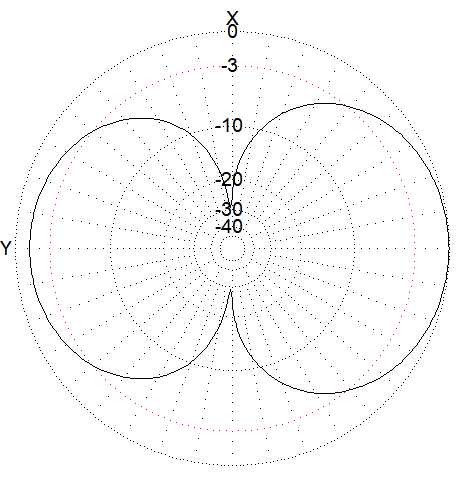
I have found modeling to be quite beneficial for multiband antennas such as my OCF, as it can be useful to know at which angles I have gain, and at which I have nulls. Luckily, on 20m, I have quite a bit of gain to Europe, although there is little power heading south toward South America. [See picture for 20m pattern.] There are quite a few nulls on the higher frequency bands, but I have not found that to be too much of a problem so far. But of course, “if ya’ don’t hear ‘em, ya’ don’t work ‘em,” so I do not know what I am missing out on in the nulls. The OCF works well all the way up to 6m, and I have confirmed 42 states and several countries with FT8 on VHF.
Designing and installing other antennas
After I got a small amount of experience with contesting, I quickly found a desire for a beam for at least one HF band. I wanted to either select 20m towards Europe or 15m towards the South, but due to the orientation of my house, I decided to build a 15m beam. After some antenna modeling, I found that a Moxon beam would be the best way to go for my situation due to the wide beamwidth and high front-to-back ratio they have, as well as taking up less space in my attic than would a traditional two-element Yagi. Significant gain over the OCF towards certain countries is quite evident.
Since the OCF only operates 40-6 meters, I quickly found a need for an 80m antenna. For several contest weekends in the summer, I put up an 80M dipole outside supported by a short mast constructed of PVC tubing, but that could not stay up long for structural and aesthetic reasons. Okay, back to the drawing board with my modeling software. After learning about putting inductors in an antenna design, I started playing around with loaded 80m dipoles with the inductors in the middle of each leg, which proved to be a reasonable compromise between inductor size and placement efficiency.
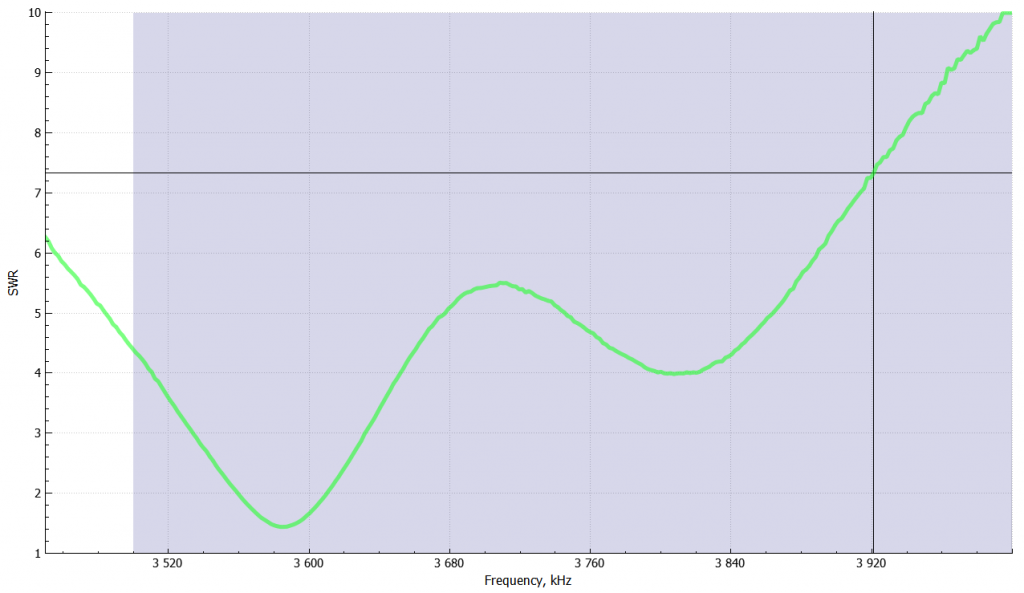
Utilizing the air-core inductor formula, where L = inductance, d = coil diameter, l = coil length in inches, and n = number of turns; I wound two 50 µH coils and put them in the middle of each thirty-foot leg of the antenna.
What’s next?
I am planning on installing a 130-foot-tall self-supporting tower next summer – umm, no. Let’s try it again. I am planning on installing several more antennas in my attic. As many others did, I enjoyed reading the article in QST written by N1LF on his attic VHF antenna system. I am planning on installing horizontal antennas for 2m and 70cm so I can explore the world of VHF beyond repeaters. Since my attic filled with rafters is not conducive to a rotatable beam, I am planning on making a stack of 2m dipoles for gain in the elevation pattern. I also want to get a permanent antenna up for 160m, but that will be a later project.
How do they work?
I guess this is the place where we are supposed to talk about how our antennas work. Overall, I have been very impressed with the results of my attic antenna farm. Clearly, my antennas do not compare favorably to the average participant of the “triband-wires” overlay, but I have finished second place in the QRP category for NAQP SSB and RTTY, as well as setting a record in the 8th call area for Rookies in the CQ WPX CW contest. My record for CWT has been 91 Q’s, although I am hoping next summer to be able to operate every CWT and reach 100 Q’s with more practice contesting, and of course, more antenna optimization.
